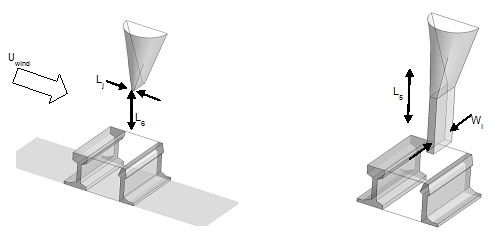In its continuing drive to improve operational reliability during occasional spells of extremely cold weather, Network Rail is evaluating a range of measures to deal with the problem of frozen points, which can occur when snow becomes compacted and solidifies between the fixed and moving rails. Wilde was commissioned to evaluate a proposed system and optimise it for mechanical and thermal efficiency.
One candidate countermeasure involves blowing hot air at the rails from a truck-mounted diesel heater, through flexible ducting.
The study involved three stages:
- Identify the most promising generic configuration by comparing ANSYS CFD simulations of five variants.
- Develop a mathematical model of system behaviour, to identify the critical design parameters from the large number of geometrical dimensions, insulation properties, etc.
- Conduct a formal optimisation exercise by systematic variation of critical parameters in further ANSYS CFD simulations.
The optimised design is currently under construction for prototype trials this winter.

The work completed by Wilde has been invaluable in enabling us to design and build an optimised solution for clearing ice and snow with gusto. The computer modelling and subsequent report was very thorough offering options for alternative design. We will be verifying the data in real life conditions this winter; which will be the true measure of this work.
Reliability Improvement Specialist (Seasonal), Network Rail

